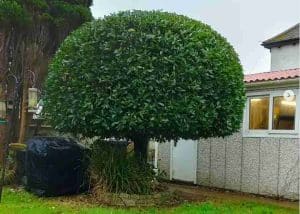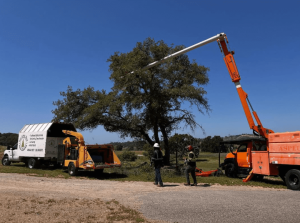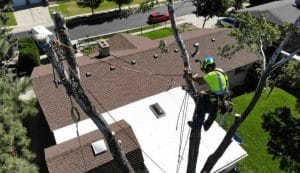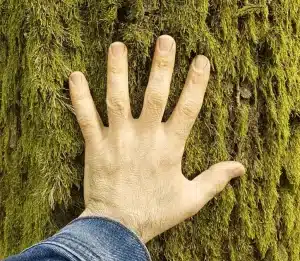Ormond Beach, Florida, is known for its stunning coastal landscapes, where trees like live oaks, sabal palms, pondcypress, slash pines, and southern magnolias thrive. These trees provide shade, beauty, and value to your property, but they need proper care to flourish in the region’s subtropical climate. Knowing when to trim trees in Ormond Beach is crucial for promoting maximum growth, preventing storm damage, and keeping your yard safe and attractive. Pruning at the right time helps trees heal quickly, resist pests, and withstand hurricanes, which are a reality in this coastal city. This article explains the best times to trim trees for optimal growth, tailored to Ormond Beach’s unique weather and soil conditions.
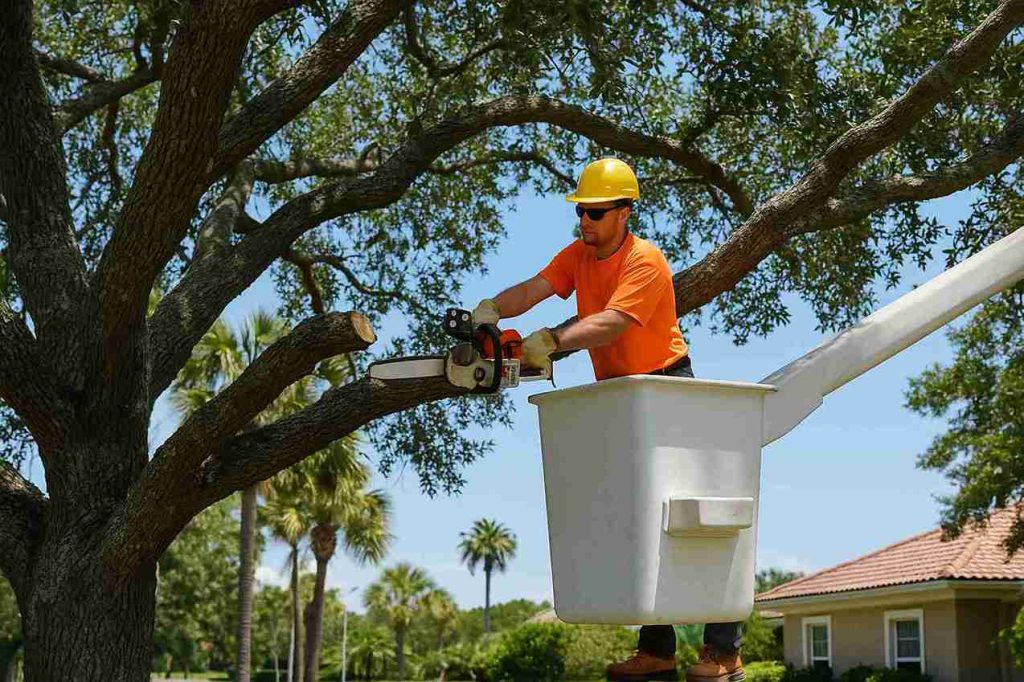
Table of Contents
Why Timing Your Tree Trimming Is Critical in Ormond Beach
The timing of tree trimming directly affects how well your trees grow and stay healthy. Ormond Beach’s climate—hot, humid summers, mild winters, and hurricane season from June to November—creates specific challenges for tree care. Trimming at the wrong time can stress trees, slow their growth, or make them vulnerable to pests, diseases, or wind damage. Proper timing offers these benefits:
- Promotes Healthy Growth: Pruning during the right season helps trees focus energy on new branches and leaves, leading to fuller, stronger growth.
- Reduces Storm Risks: Removing weak or overgrown branches before hurricanes hit lowers the chance of limbs crashing into your home or power lines.
- Prevents Pests and Diseases: Timing cuts to avoid peak pest or disease seasons, like oak wilt in warmer months, keeps trees healthier.
- Boosts Curb Appeal: Well-timed trimming shapes trees for a neat, polished look, increasing your property’s value and charm.
For instance, pruning a live oak during its dormant period prevents oak wilt, a fungal disease spread by beetles in spring and summer. Similarly, trimming sabal palms at the right time reduces wind resistance, helping them stand strong during storms. By understanding the best time to trim trees in Ormond Beach, you can avoid costly mistakes and enjoy thriving trees year-round.
The Best Seasons for Trimming Trees in Ormond Beach
The ideal time to trim trees varies by species, climate, and your goals—whether it’s boosting growth, shaping the canopy, or preparing for storms. In Ormond Beach, late winter to early spring (February to early April) is generally the best time for most trees, as it aligns with dormancy or the start of new growth. However, flowering trees and subtropical species like palms may require different schedules. Here’s a breakdown of the best seasons for trimming to maximize growth.
Late Winter to Early Spring (February to Early April)
For most trees in Ormond Beach, late winter to early spring is the prime time for trimming. Trees like live oaks, slash pines, pondcypress, and maples are either dormant or just starting to grow, making this period ideal for pruning. Here’s why:
- Quick Healing: Trees recover faster from cuts as they enter their spring growth phase, reducing the risk of infections or pest invasions.
- Better Visibility: Deciduous trees, like some oaks, lose leaves in winter, making it easier to spot dead, damaged, or crossing branches that need removal.
- Growth Surge: Pruning before spring directs energy to new, healthy branches, resulting in fuller foliage and stronger structure.
For example, trimming live oaks in February or March avoids oak wilt, which spreads through fresh cuts in warmer months. Citrus trees, popular in Ormond Beach backyards, also benefit from early spring pruning to boost fruit production and prevent diseases like fireblight.
Pro Tip: Schedule pruning before April to avoid oak wilt season (April to October) for oaks, and always use clean, sharp tools to prevent disease spread.
Late Spring to Early Summer (May to June)
Flowering trees like southern magnolias, crepe myrtles, and other spring-blooming species should be trimmed in late spring or early summer, right after their flowers fade. This timing ensures you don’t cut off next year’s buds, which form on new growth. Benefits include:
- Preserving Flowers: Pruning after blooms ensures vibrant displays the following spring.
- Encouraging New Growth: Post-bloom cuts stimulate branches that will produce buds for next season.
- Maintaining Shape: Shaping in late spring keeps trees tidy and enhances your yard’s aesthetic.
For instance, pruning a southern magnolia in May after its white flowers drop promotes healthy growth and ensures a stunning bloom next year. This timing also helps crepe myrtles, common in Ormond Beach, maintain their vibrant summer flowers.
Fall (October to November)
Fall is a secondary option for trimming certain trees, especially after hurricane season ends in November. The cooler temperatures and reduced pest activity make it a safe time for light pruning or post-storm cleanup. Here’s why fall trimming can work:
- Storm Recovery: After hurricanes, fall is ideal for removing broken or weakened branches and assessing trees for hidden damage like cracks or partial uprooting.
- New Tree Planting: Fall is a great time to plant trees in Ormond Beach, as cooler weather reduces transplant shock, and light trimming helps new trees establish strong roots.
- Moderate Growth: Trees like sabal palms benefit from fall trimming, as mild weather supports steady growth without summer’s intense heat.
Avoid heavy pruning in fall for deciduous trees, as new growth may not harden before cooler weather, leaving trees vulnerable to damage.
Year-Round Trimming for Subtropical Trees
Subtropical trees like sabal palms, coconut palms, and other evergreens can be trimmed year-round in Ormond Beach due to the mild climate and consistent sunlight. Light maintenance, such as removing dead fronds or shaping, offers these benefits:
- Cleaner Appearance: Regular trimming removes brown fronds, keeping palms neat and attractive.
- Storm Preparedness: Clearing dead fronds reduces wind resistance, helping palms withstand hurricanes and tropical storms.
- Healthier Trees: Removing dead or diseased parts allows trees to focus energy on healthy growth, especially in salty coastal conditions.
For example, trimming dead fronds from a sabal palm any time of year keeps it healthy and reduces debris during storms, a common concern in Ormond Beach.
Caution: Never remove more than 25% of a tree’s canopy at once, as over-pruning can stress the tree, stunt growth, or invite pests.
Tree-Specific Trimming Tips for Ormond Beach
Ormond Beach’s common tree species have unique needs based on their growth patterns and the local environment. Here are tailored tips to maximize growth for popular trees.
Live Oaks
Live oaks are a staple in Ormond Beach, offering shade and beauty but requiring careful pruning to avoid oak wilt and ensure resilience. Trim in late winter (February to March) to:
- Remove dead or crossing branches to improve air circulation and sunlight penetration.
- Avoid pruning from April to October to prevent oak wilt, spread by beetles through fresh cuts.
- Shape the canopy to reduce wind resistance, critical for hurricane-prone areas like Ormond Beach.
Sabal Palms
Sabal palms, Florida’s state tree, are well-suited to Ormond Beach’s coastal conditions. Trim year-round to:
- Remove only fully brown or dead fronds to avoid stressing the palm.
- Avoid over-trimming, which can weaken the palm’s ability to withstand high winds.
- Clean the trunk of sprouting fronds for a polished, “hurricane-cut” look popular in coastal areas.
Southern Magnolias
Southern magnolias add elegance with their glossy leaves and fragrant blooms. Trim in late spring (May to June) after flowering to:
- Stimulate new bud growth for next year’s flowers.
- Lift lower branches to improve access for mowing or landscaping.
- Thin crowded branches to enhance air circulation and reduce fungal risks in humid conditions.
Citrus Trees
Citrus trees, like oranges and lemons, are popular for home fruit production. Trim in early spring (February to early April) to:
- Boost fruit production by removing dead or overcrowded branches.
- Prevent diseases like fireblight, which spreads in warmer months.
- Shape the tree to maximize sunlight, essential for juicy, healthy fruit.
Slash Pines
Slash pines, common in Ormond Beach, provide height and shade. Trim in late winter to:
- Remove lower branches to create clearance for pathways or lawns.
- Thin dense areas to improve wind flow, reducing storm damage risks.
- Avoid heavy pruning, as pines are sensitive to excessive cuts.
Note: Always research your tree’s specific needs or consult a certified arborist, as improper pruning can harm certain species.
Common Tree Trimming Mistakes to Avoid in Ormond Beach
Mistakes during trimming can damage trees and undo your efforts to promote growth. Here are pitfalls to avoid:
- Over-Pruning: Cutting more than 25% of a tree’s canopy stresses it, reducing growth and inviting pests or diseases. Stick to light, targeted cuts.
- Wrong Timing: Pruning during active growth (spring or summer for most trees) can cause sap bleeding or slow healing, especially for maples or elms.
- Improper Cuts: Cutting too close to the trunk or leaving stubs invites decay or pests. Always cut just outside the branch collar for proper healing.
- Ignoring Local Conditions: Ormond Beach’s sandy soils, salt spray, and hurricanes require tailored care. Trimming without considering these factors can weaken trees.
- DIY Dangers: Using dull tools or attempting to trim tall trees without safety gear risks injury or tree damage. For large or hazardous trees, hire a professional.
By steering clear of these mistakes, you ensure your trees grow stronger and stay healthy, enhancing your property’s safety and beauty.
Benefits of Hiring a Professional in Ormond Beach
While DIY trimming is an option for small branches, professional arborists offer expertise that maximizes results in Ormond Beach’s challenging environment. Benefits include:
- Local Expertise: Certified arborists know Ormond Beach’s tree species, climate, and risks like oak wilt or hurricane damage, ensuring precise pruning.
- Safety First: Professionals use specialized equipment to safely trim tall or hazardous trees, protecting you and your property.
- Time Savings: Arborists work efficiently, handling debris cleanup to leave your yard spotless.
- Storm Readiness: Regular professional trimming removes weak limbs, reducing the risk of damage during hurricanes, a major concern in Ormond Beach.
For example, a professional can spot hidden storm damage, like internal cracks or root issues, that homeowners might miss, preventing future problems.
How to Prepare Your Trees for Trimming
Proper preparation ensures trimming is safe and effective. Follow these steps:
- Inspect Your Trees: Walk your property in early spring or fall to identify dead, damaged, or overhanging branches. Look for signs of stress, like leaf burn from salt spray or premature leaf drop, common in Ormond Beach.
- Check Local Rules: Some Ormond Beach areas require permits for trimming protected trees, like large oaks or historic specimens. Contact the city’s Neighborhood Improvement Department at 386-676-3352 to confirm.
- Clear the Area: Move lawn furniture, cars, or other items to provide easy access and protect your property from falling branches.
- Define Your Goals: Decide if you want to boost growth, shape the tree, or reduce storm risks. Clear goals help arborists tailor their work.
- Test Soil: Ormond Beach’s sandy soils lose nutrients quickly. A soil test through the University of Florida Extension (Volusia County office) can guide fertilization to support post-trimming growth.
Preparation sets the stage for successful trimming and healthy trees.
What to Expect After Trimming
After trimming, your trees will show immediate and long-term benefits if done correctly:
- Vigorous Growth: Trees pruned in late winter or early spring often produce new shoots and fuller foliage within weeks, especially deciduous species.
- Stronger Structure: Removing weak branches reduces wind resistance, making trees more resilient during Ormond Beach’s storms.
- Enhanced Beauty: A well-pruned tree looks neat and polished, boosting your home’s curb appeal and potentially its market value.
- Ongoing Maintenance: Water trees regularly, especially in sandy soils, to aid recovery. Avoid heavy equipment near roots to prevent compaction.
Watch for signs of stress, like wilting or slow growth, and consult an arborist if issues arise. With proper care, your trees will thrive for years.
Solving Common Tree Care Problems in Ormond Beach
Timely trimming addresses many issues homeowners face in Ormond Beach’s unique environment:
- Hurricane Damage: Regular pruning removes weak limbs, reducing the risk of branches falling during storms. Post-hurricane cleanup in fall catches hidden damage.
- Salt Spray Stress: Coastal winds carry salt that burns leaves and stunts growth. Trimming dead foliage and choosing salt-tolerant species like sabal palms helps trees recover.
- Pests and Diseases: Pruning diseased branches in late winter prevents issues like oak wilt or fireblight from spreading in warmer months.
- Overcrowded Canopies: Thinning dense branches improves air circulation and sunlight, promoting growth and preventing weak limbs.
By tackling these problems with strategic trimming, you protect your trees and property from damage and costly repairs.

Start Your Tree Care Journey Today
Your trees are a vital part of your Ormond Beach property, providing shade, beauty, and protection. By trimming at the right time late winter for oaks and pines, post-bloom for magnolias, or year-round for palms you can ensure maximum growth, storm resilience, and a stunning landscape. Avoid common mistakes, prepare your trees properly, and consider professional help for the best results. Ready to transform your yard? Walk your property this week to spot trees that need attention, and contact a local certified arborist for a consultation.
FAQs
When should I trim trees in Ormond Beach?
Trim most trees in late winter (Feb–Mar) before spring growth. This helps trees heal faster and reduces the risk of pests and diseases.
Is it okay to trim oak trees in summer in Ormond Beach?
Avoid trimming oaks from April to October to prevent oak wilt. Prune during winter when beetles that spread the disease are inactive.
Best time to trim palm trees in Ormond Beach?
Palms can be trimmed year-round, but spring is ideal. Remove only dead or brown fronds to keep the tree healthy and storm-resistant.
Can I trim citrus trees in Ormond Beach in spring?
Yes, early spring (Feb–Mar) is best for citrus trees. Pruning then boosts fruit production and helps prevent diseases like fireblight.
Should I prune trees before hurricane season in Florida?
Yes, prune in late winter or early spring to remove weak branches. This prepares trees to withstand storms during hurricane season (June–Nov).
How often should I trim trees in Ormond Beach?
Trim trees every 1–3 years, depending on the species and growth. Regular pruning keeps trees healthy and reduces storm damage risks.
Do I need a permit to trim trees in Ormond Beach?
For major trimming or removal, especially of protected species like large oaks, contact the city’s Neighborhood Improvement Division at (386) 676-3352.
Why avoid trimming trees in fall in Ormond Beach?
Fall pruning can lead to new growth that may not harden before winter, making trees vulnerable to damage. It’s better to prune in late winter or early spring.
Can I trim flowering trees after they bloom in Florida?
Yes, prune flowering trees like magnolias right after blooms fade. This timing ensures healthy growth and vibrant flowers next season.
Is DIY tree trimming safe in Ormond Beach?
For small branches, yes. But for large or high branches, hire a certified arborist to ensure safety and proper tree care.

